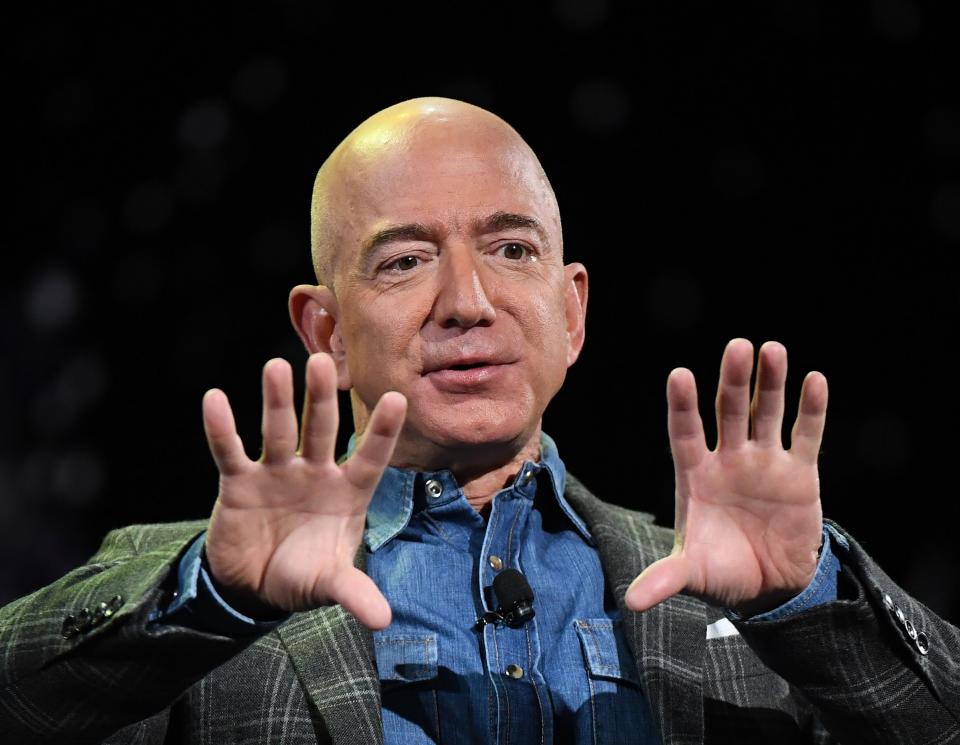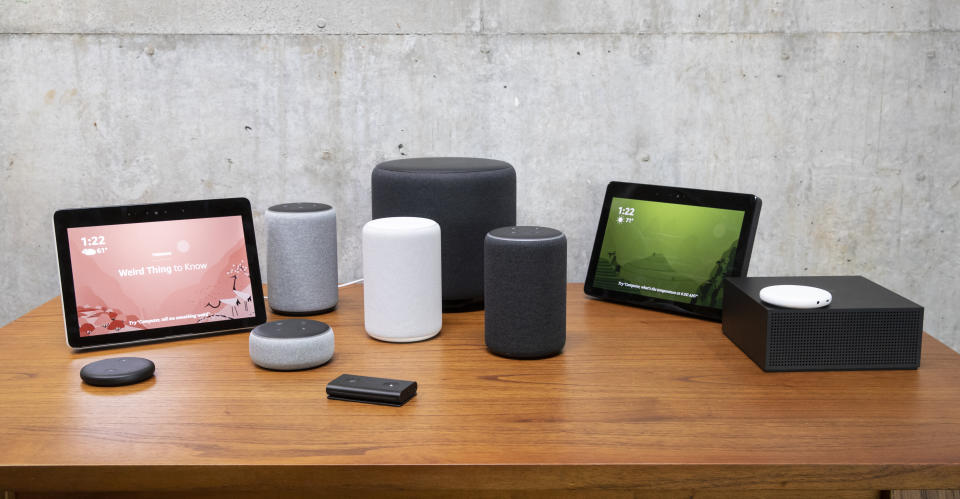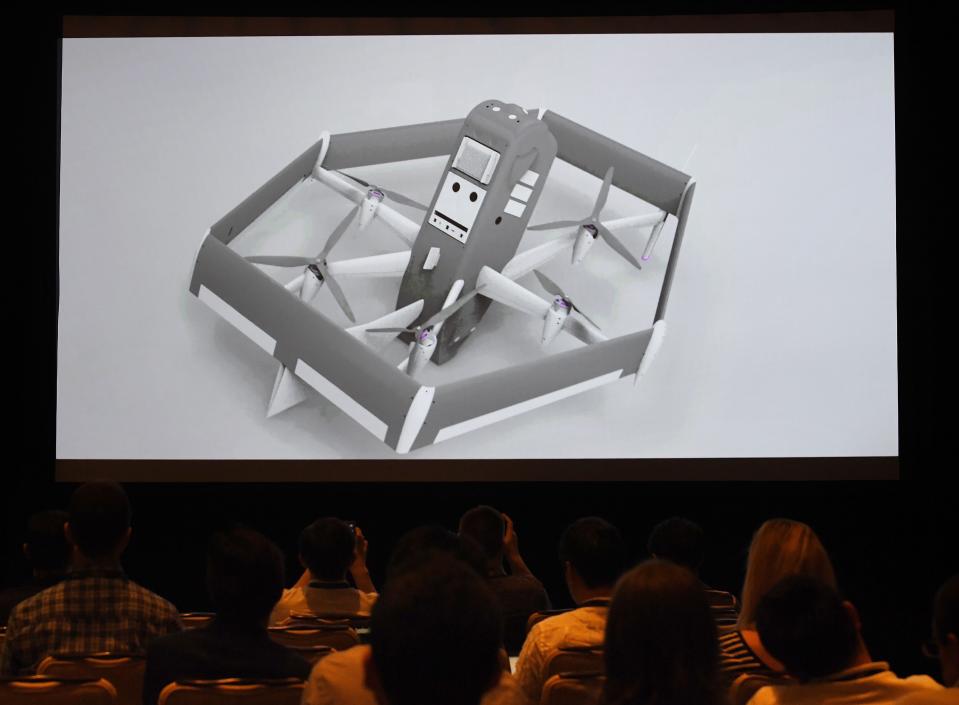Why AI is Amazon’s competitive edge

Artificial intelligence is transforming everything from agriculture to transportation, but for Amazon (AMZN), it’s become the key technology for advancing the company’s agenda across virtually all fronts, including e-commerce, hardware, and order delivery.
At Amazon’s re: MARS conference in Las Vegas this week, the Seattle tech giant announced advancements in AI, including drones that could be delivering packages “within months,” a new warehouse robot called the Pegasus Drive, the ability for Alexa to ask follow-up questions and perform multiple skills, and StyleSnap, an AI feature that lets users take a photo of clothing they like and find similar items to buy in Amazon's app. And although it wasn’t the case a decade ago, Amazon is widely considered by many to be at the forefront of AI innovation.
“We really do believe we can solve the most interesting and challenging problems facing us today using AI,” said Dave Limp, Amazon’s senior vice president of devices and services during his keynote on Tuesday.
Catching up on AI
It wasn’t always that way for Amazon. According to a Wired story from February 2018, Amazon’s push into AI in the early part of this decade involved an aggressive company-wide effort, tasking every team leader at Amazon with embedding AI technologies such as machine learning, computer vision and speech recognition into their respective businesses.
“It’s an arms race in AI between Amazon, Microsoft, IBM and Google, especially in the enterprise, but Amazon is really taking AI and spreading it across its whole ecosystem,” says Wedbush managing director Dan Ives.
AI can be found across nearly all of Amazon’s products and services, from Amazon.com homepage recommendations, which offer items to buy based on users’ browsing habits and purchases, to the company’s Amazon Go stores. The cashier-free stories deploy a combination of cameras, computer vision, and machine learning to track shoppers, so they can grab what they want and go without having to stop and pay like they would in traditional retail stores.
But it’s Amazon’s Alexa voice assistant that has become the Seattle tech giant’s most obvious example of AI. Since the Seattle tech giant introduced the first Amazon Echo speaker in 2015, Alexa has become a dominant force.

“With Echo, they’ve dominated the home speaker market, and that’s something that Google and Apple has aggressively gone after but to little success relative to what Amazon has done,” Ives added.
Nearly 72% of all smart speaker owners in the U.S. owned an Alexa-enabled Amazon Echo, according to a survey conducted by voice applications platform Voicify, which polled 1,038 adults in the U.S. in January 2019.
Meanwhile, Amazon and its partners announced this January they had sold 100 million Alexa-enabled devices, from TV speaker bars to thermostats and home security cameras. And at re: MARS, this week, Amazon said the voice assistant is now capable of performing 90,000 “skills,” or tasks, and asking follow-up questions to perform multiple skills. That should go some ways to realizing Amazon’s long-term vision of making Alexa a “Star Trek”-like supercomputer but also capturing more Amazon customers in its vast ecosystem e-commerce and media.
Advancements in robotics

In 2013, Amazon CEO Jeff Bezos told “60 Minutes” he expected drones to deliver Amazon orders within the next four or five years. And while Amazon missed that deadline, it announced this week that drones will start delivering packages to customers within the next few months. That’s thanks to Federal Aviation Administration approval and a new drone design that uses built-in sensors so Amazon’s drones can fly autonomously without posing a threat to aircraft or people on the ground. If Amazon makes good on its latest promise, it would be the first major consumer company to deploy drones for delivery.
The company this week also announced the Pegasus Drive, a two-by-three foot fulfillment center robot that should increase efficiency in Amazon’s warehouses by cutting down on mis-sorted items by 50%. (Earlier in the year, the company said it has already deployed over 100,000 robots across 25 of its fulfillment centers in the U.S.) Amazon also introduced StyleSnap this week, a feature on the Amazon App that lets customers shop for clothes by taking a screenshot of a look or style they like.
StyleSnap isn’t the first such consumer feature of its kind, given companies like eBay (EBAY) and Pinterest (PINS) offer somewhat similar abilities to its users. But for Amazon, it represents another way for the tech giant to stay competitive, particularly in e-commerce, where Amazon accounted for 50% of e-commerce growth in 2018, according to Wells Fargo Securities.
Certainly, for Amazon’s long-term thinking management, staying extremely competitive, thanks to technologies like AI, is a necessity.
Follow Yahoo Finance on Twitter, Facebook, Instagram, Flipboard, SmartNews, LinkedIn,YouTube, and reddit.
More from JP:

 Yahoo Finance
Yahoo Finance 
